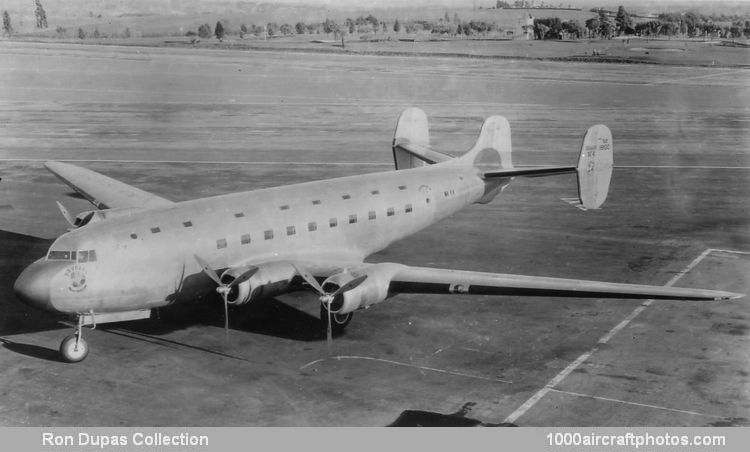08/31/2007. Remarks by Jack McKillop: "In the second half of 1935, United Air Lines officials approached Douglas Aircraft seeking the possible development of a four-engine transport with twice the capacity of the DC-3. Neither Douglas nor United had the money to fund such a project so four other airlines were solicited and agreed to provide money. The four were American Airlines, Eastern Air Lines, Pan American Airways and Transcontinental and Western Airlines (TWA). Each of these four agreed to commit US$100,000 (US$1.5 million in 2007 dollars) toward the design and construction of this plane.
The aircraft was designed to carry 42 day passengers or 30 night passengers with full sleeping accommodations including a private bridal room. It would also have a tricycle landing gear, the first to be used on an aircraft of this size. As time went by, both Pan American and TWA grew concerned about the size and complexity of the DC-4E and withdrew their support and they sponsored the smaller Boeing 314 transport. This aircraft rolled off the assembly line in May 1938 and made its first flight on June 7, 1938.
After further tests, the aircraft was turned over to United Air Lines in May 1939 and flown over some of the airlines routes. United officials were impressed with the aircraft but were concerned about its complexity, maintenance problems and operating costs. The three sponsoring airlines decided not to buy the aircraft but to sponsor a new, less complex aircraft which became known as the DC-4/C-54.
In late 1939, this DC-4E was sold to the Mitsui Trading Company of Japan supposedly for Greater Japan Air Lines. The aircraft was flown for a brief period after being assembled and was then reported as having crashed in Tokyo Bay. Actually, it had been dismantled by Nakajima on behalf of the Imperial Japanese Navy Air Service to be used as a basis for the four-engine Nakajima G5N1, Navy Experimental 13-Shi Attack Bomber Shinzan. The G5N was assigned the Allied Code name "Liz". Four G5N1s and two G5N2s were built but the complexity of the aircraft, weight increases and unreliable engines led to poor performance and the aircraft never went into production."
